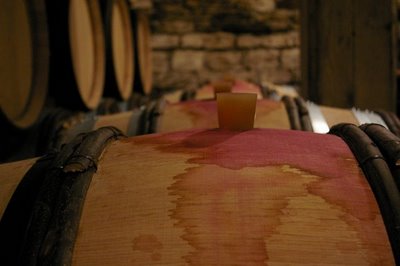
It has been said that while Cabernet Sauvignon is the intellectual grape variety, while Pinot Noir is the more sensual one. Actually, I think it was Jancis Robinson who stated that while Bordeaux (and by extension Cabernet) appeals to the head, the appeal of Burgundy (and by extension Pinot Noir) is to somewhere lower down on the body. [I don’t think she was referring to the stomach.]
I’m not sure I agree entirely, but I sympathise with the general sentiment that’s being made. Pinot Noir at its best is the world’s most ethereal, elegant and hauntingly beautiful red grape variety.
Beware. If you get bitten by the Pinot Noir bug, you’ll have started on a lifelong quest that will involve lots of disappointment, many lows, and the blowing of a great deal of cash. But the high points will make it worthwhile.
Pinot Noir’s home is the Burgundy region of central-east France. It has been grown here for absolutely ages, and the fascinating thing about Burgundy is how a hierarchy of vineyard sites has evolved, based on the suitability of the underlying geology – in combination with the climate in Burgundy – to make great Pinot Noir and Chardonnay (the other main grape in the region). You can travel thirty metres in one direction and move from a vineyard that makes sublime Pinot Noir to one that makes very ordinary expressions of the same grape. We’ll return to this when we cover Burgundy in depth. For now, it’s enough to know that the quality of red Burgundy is in large part due to the character of the vineyard that it comes from.
Pinot Noir is a very sensitive variety. It doesn’t travel well; it’s hard to grow—and even if you produce perfect grapes, it’s easy to mess things up in the winery. For this reason, as a consumer you need to choose your Pinot Noir with care, and particularly so if you are looking at Burgundy.
It’s a thin skinned grape variety, and this makes it susceptible to fungal diseases. And because the pigments that colour red wines are found in the skins of the grapes, this means that Pinot doesn’t make very dark wines. Indeed, the best Pinot Noirs are often lighter in colour, and if you are faced with a dark, opaque Pinot Noir, it’s not an altogether positive sign. It could mean that the climate is too warm for good Pinot, or it could mean that the winemaking has been heavy handed, aiming for making big wines rather than elegant ones.
Time for a digression. What is ‘elegance’ in a wine, and why is it so prized? Good question. We’ll cover this in the next post, before we return to Pinot Noir for part 2.

